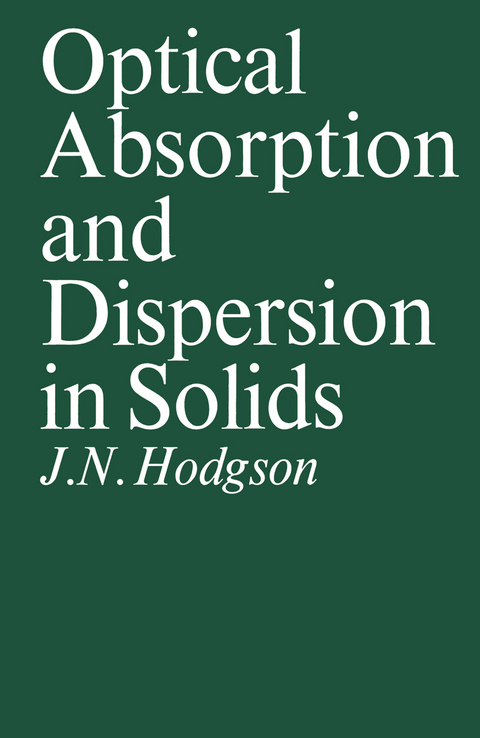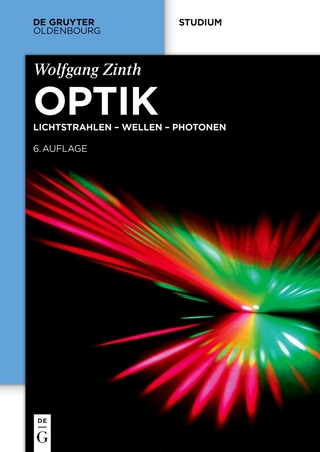
Optical Absorption and Dispersion in Solids
Springer-Verlag New York Inc.
9781461333234 (ISBN)
1. Macroscopic Theory.- 1.1 Electromagnetic field in a solid.- 1.2 Dielectric constant and optical conductivity.- 1.3 Crystal symmetry.- 1.4 Propagation of waves.- 1.5 Kramers-Krönig relations.- 1.6 The sum rule.- 1.7 Dispersion theory of classical oscillators.- 2. Crystal Lattice Absorption.- 2.1 Vibrational modes of a crystal lattice.- 2.2 Photon-phonon interaction.- 2.3 Microscopic theory of infra-red dispersion.- 2.4 Two-phonon absorption.- 3. Interband Transitions.- 3.1 Electron energy bands.- 3.2 Direct transitions.- 3.3 Critical points.- 3.4 Absorption band edges.- 3.5 Indirect transitions.- 3.6 Infra-red absorption in superconductors.- 4. Free Carrier Absorption.- 4.1 Classical theory.- 4.2 Intraband transitions.- 4.3 Electron transport.- 4.4 Surface admittance.- 4.5 Infra-red absorption in metals.- 4.6 Free carrier absorption in semiconductors.- 5. Plasma Effects.- 5.1 Free electron model.- 5.2 Volume plasmons.- 5.3 Surface plasmons.- 6. Exciton Effects.- 6.1 Electron-hole interaction.- 6.2 Optical absorption.- 6.3 Inert-atom solids and alkali halides.- 6.4 Semiconductors.- 6.5 Spatial dispersion.- 7. Non-Linear Optics.- 7.1 Classification of non-linear effects.- 7.2 Non-linear susceptibilities.- 7.3 Second harmonic generation.- 7.4 Parametric amplification and oscillation.- 7.5 Third order effects.- References.
| Zusatzinfo | VIII, 138 p. |
|---|---|
| Verlagsort | New York, NY |
| Sprache | englisch |
| Maße | 140 x 216 mm |
| Themenwelt | Schulbuch / Wörterbuch |
| Geisteswissenschaften | |
| Naturwissenschaften ► Physik / Astronomie ► Optik | |
| Sozialwissenschaften | |
| ISBN-13 | 9781461333234 / 9781461333234 |
| Zustand | Neuware |
| Informationen gemäß Produktsicherheitsverordnung (GPSR) | |
| Haben Sie eine Frage zum Produkt? |
aus dem Bereich


